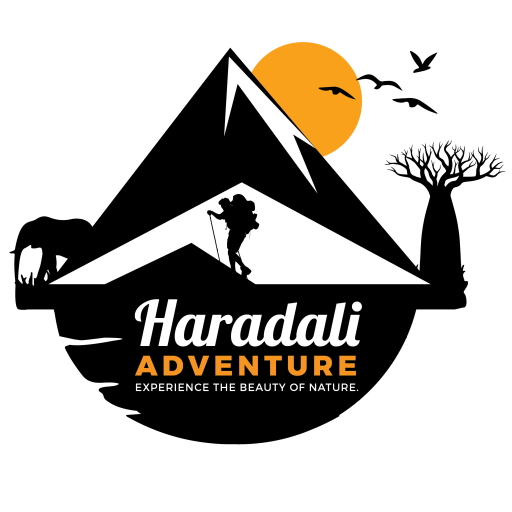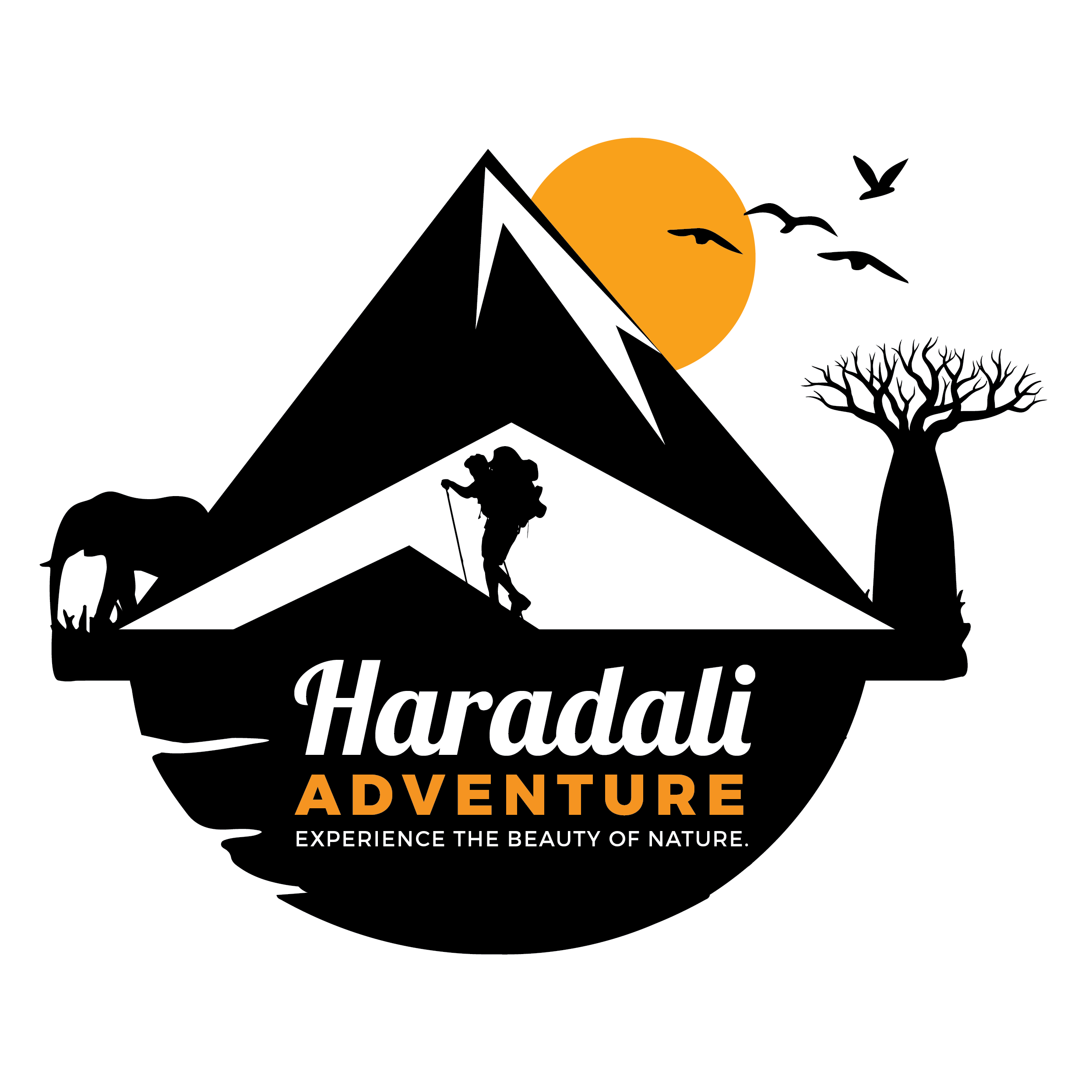Ngorongoro Crater
Located in the heart of Tanzania, the Ngorongoro Crater is one of the world’s most spectacular natural wonders. Formed millions of years ago by a volcanic eruption, this vast caldera is home to diverse wildlife, breathtaking landscapes, and rich cultural heritage. As one of Tanzania’s most popular safari destinations, Ngorongoro offers an unforgettable experience for visitors seeking to connect with nature and witness a unique ecosystem.
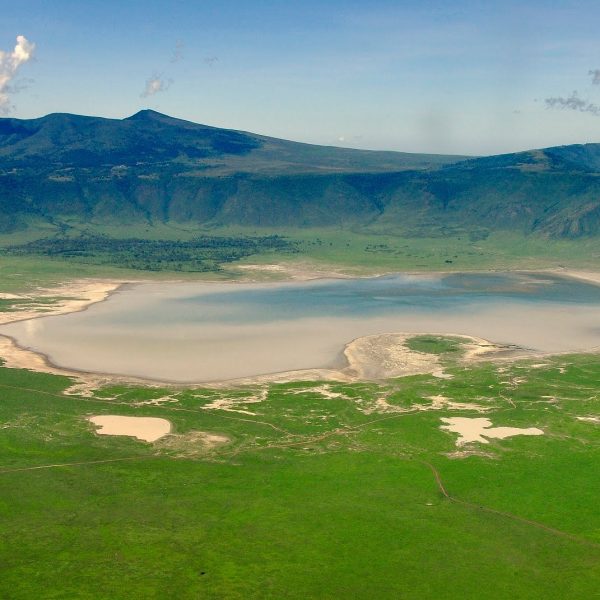
Why Visit Ngorongoro Crater
The Ngorongoro Crater is often referred to as the “Eighth Wonder of the World” due to its breathtaking beauty and ecological significance. The crater’s sheer size, combined with its exceptional biodiversity, makes it a must-visit destination for nature lovers and adventure seekers alike.
Rich Biodiversity: The crater is home to over 25,000 large mammals, including the Big Five (lions, elephants, rhinos, buffaloes, and leopards).
– Accessible Wildlife Viewing: The unique geography of the crater makes it one of the best places on Earth to spot wildlife up close in a relatively compact area.
– Scenic Beauty: The views from the rim are awe-inspiring, offering sweeping panoramas of lush grasslands, forested areas, and the vast crater floor.
What is the Ngorongoro Crater?
The Ngorongoro Crater is a massive volcanic caldera that measures about 19.2 kilometers (12 miles) in diameter and covers an area of 260 square kilometers (100 square miles). It was created by a collapsed volcano around 2 to 3 million years ago and has since evolved into a thriving wildlife sanctuary. The crater is part of the Ngorongoro Conservation Area, which is also home to the famous Olduvai Gorge, where some of the earliest human fossils were discovered.
Best Time to Visit Ngorongoro Crater
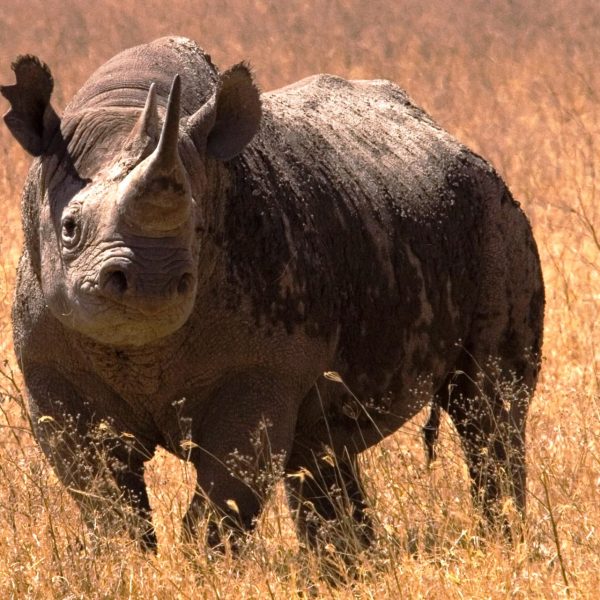
Dry Season (June to October) Peak Safari Season
The dry season is widely considered the best time to visit the Ngorongoro Crater, especially for wildlife enthusiasts. During these months, the weather is warm and dry, and animals tend to congregate around water sources, making wildlife sightings more frequent.
Weather: Clear skies, warm temperatures ranging from 25°C (77°F) to 30°C (86°F).
– Wildlife: The dry season offers excellent game viewing, with clear visibility and fewer trees or bushes to obstruct your view.
Wet Season (March to May) A Quieter Experience
Although the wet season is considered the off-season, it offers a different kind of charm. The rains transform the landscape, making it lush and vibrant. The wet season also means fewer tourists, providing a more private safari experience.
Weather: Rainy, with temperatures around 23°C (73°F) to 28°C (82°F). Expect heavy rainfall, especially in April and May.
– Wildlife: While the wet season may make wildlife more challenging to spot due to the dense vegetation, the landscape is lush, and the birdlife is particularly abundant.
Shoulder Season (January to February)
The months of January and February are ideal for those who want to experience both dry season benefits and the calving season of the wildebeest, which often takes place in the southern Serengeti but is close enough to the crater area to witness migration movements.
Weather: Warm and less rainy, perfect for game viewing with a mix of lush greenery.
– Wildlife: Ideal for witnessing predator-prey action as wildebeest calves are born and lions, cheetahs, and hyenas are in full hunting mode.
Top Things to Do in Ngorongoro Crater
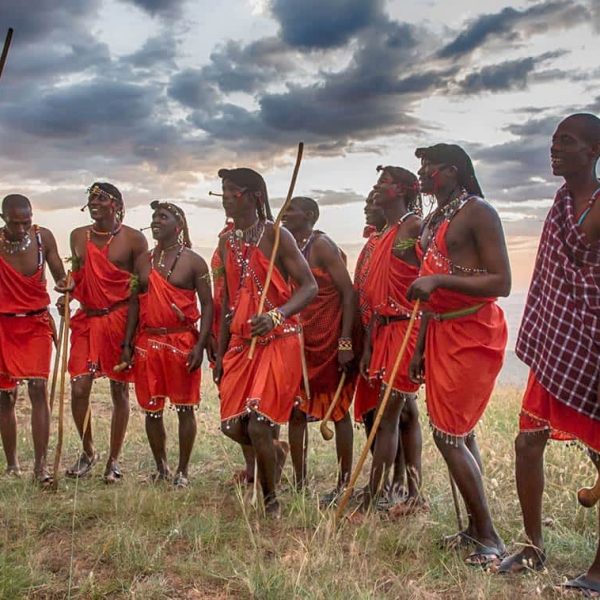
Safari Game Drives
The Ngorongoro Crater is one of the few places where you can see nearly all the major African animals within a single day. You’ll have the opportunity to spot elephants, lions, buffaloes, rhinos, and leopards, as well as cheetahs, zebras, wildebeests, and many bird species.
Tip: Opt for an early morning or late afternoon game drive to maximize your chances of seeing wildlife in action.
Visit the Ngorongoro Crater Rim
The rim of the crater offers stunning panoramic views of the caldera and the surrounding highlands. Several viewpoints along the edge provide excellent photo opportunities and a chance to enjoy the beauty of this UNESCO World Heritage Site from above.
Explore the Olduvai Gorge
Located just outside the Ngorongoro Crater, the Olduvai Gorge is one of the most important archaeological sites in the world. It is often referred to as the “Cradle of Mankind,” where fossil evidence of early human ancestors has been found.
Visit the Maasai Villages
The Ngorongoro Conservation Area is home to the Maasai, who have lived in harmony with the land for centuries. A visit to a Masai village offers a chance to learn about their rich culture, traditional customs, and nomadic lifestyle.
Wildlife in Ngorongoro Crater

The Ngorongoro Crater boasts a rich variety of wildlife, making it one of the best places in Africa for a safari. Here are some of the species you’re most likely to encounter:
Big Five: The Ngorongoro Crater is one of the few places where all five members of the Big Five—lion, leopard, elephant, buffalo, and rhino—can be seen in one area.
Birdlife: Over 500 species of birds have been recorded in the crater, including flamingos, ostriches, and vultures.
Endangered species: The critically endangered black rhino can be spotted in the crater, and the area serves as an important sanctuary for this species.
Accommodation Options Near Ngorongoro Crater
There are various accommodation options for visitors, ranging from luxury lodges to tented camps and more affordable choices. Some of the best places to stay include:
Ngorongoro Crater Lodge: A luxury lodge offering stunning views and five-star service, perfect for those seeking comfort.
Serena Ngorongoro Safari Lodge: A mid-range lodge with spectacular views and excellent facilities, ideal for families and groups.
Ngorongoro Sopa Lodge: A more budget-friendly option with comfortable rooms and a great location.
Tips for Visiting Ngorongoro Crater
Wear Comfortable Clothing: Light, breathable fabrics in neutral colors are ideal for a safari.
Bring binoculars and camera gear to capture the stunning wildlife and landscapes.
Respect Local Culture: When visiting Maasai villages, be respectful of their traditions and ask permission before taking photos.
Hire a Knowledgeable Guide: Local guides are essential for spotting wildlife and providing insights into the ecosystem and history of the crater.
How to Get to Ngorongoro Crater
Ngorongoro Crater is easily accessible from both Arusha and the Serengeti. Most visitors arrive via:
Road Transfers: A drive from Arusha takes about 3.5 hours.
Flights: There are scheduled flights to the nearby Manyara airstrip, from which you can transfer by road to the crater.
Why Visit Tanzania?
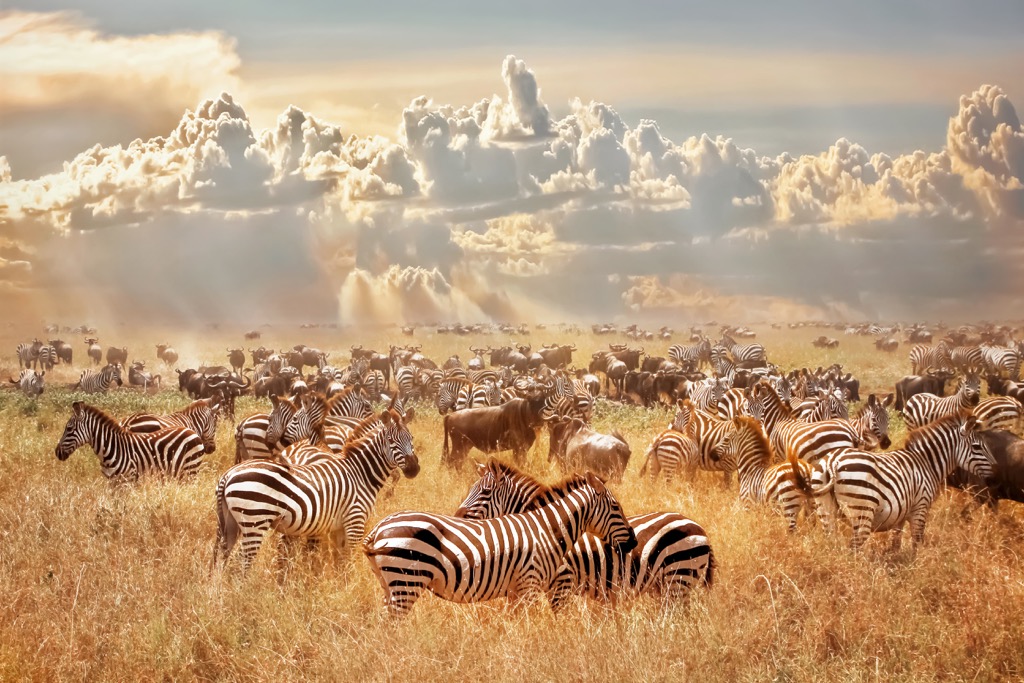
Tanzania is home to some of the world’s most iconic destinations, including:
- Serengeti National Park: Known for the Great Migration and incredible wildlife.
- Ngorongoro Crater: A UNESCO World Heritage site and one of the best places to see the Big Five.
- Mount Kilimanjaro: The highest peak in Africa, offering various trekking routes.
- Zanzibar: A tropical island paradise with pristine beaches and rich history.
No matter when you visit, Tanzania offers unparalleled opportunities for adventure, nature, and culture.
Best Time to Visit Tanzania

The best time to visit Tanzania depends on your experience preferences. For wildlife safaris, the dry season from June to October offers the best game viewing, while January to February is ideal for the Great Migration calving season in the Serengeti. If you’re climbing Mount Kilimanjaro, the best months are January to March and June to October for clear skies. Zanzibar’s beaches are perfect from June to October and December to February. Avoid the long rains (March to May) when some lodges close, though the landscape is lush and less crowded.
Understanding Tanzania's Seasons

Tanzania has two primary seasons: the dry season and the wet season. The timing of your trip will depend on your preferred activities, whether you want to enjoy wildlife safaris, beach vacations, or mountain trekking.
Dry Season (June to October): Best for Safaris and Wildlife Viewing
The dry season in Tanzania typically lasts from June to October. This is the most popular time for safaris, as it coincides with excellent wildlife viewing conditions. The dry season is ideal for those interested in seeing large game, including the Big Five.
- Weather: Warm and sunny, with temperatures ranging from 25°C (77°F) to 30°C (86°F). Nights are cooler, especially in higher altitudes like the Ngorongoro Crater.
- Wildlife: During this period, animals congregate around waterholes, and vegetation is sparse, making wildlife easier to spot. This is also the time to witness the Great Migration in the Serengeti, especially from July to October, when thousands of wildebeest cross the Mara River.
- Why Visit: Ideal for a safari experience with clear skies, fewer mosquitoes, and the best chance of seeing a variety of wildlife.
Wet Season (March to May): Best for Lush Landscapes and Fewer Crowds
The wet season in Tanzania occurs from March to May. While the rain can make certain roads impassable, the wet season also offers a unique and quieter experience for those willing to brave the conditions.
- Weather: Expect heavy rainfall, especially in April and May, with temperatures ranging from 23°C (73°F) to 28°C (82°F). Rain showers are usually short but intense.
- Wildlife: The wet season is not the best for wildlife viewing, as animals spread out across the park in search of food. However, the lush greenery makes the landscapes incredibly beautiful, and birdwatching is at its peak.
- Why Visit: Ideal for visitors looking to avoid the crowds and enjoy a more serene, peaceful experience. This is also a great time to visit the beaches of Zanzibar, where the rainfall is less intense compared to mainland Tanzania.
Shoulder Seasons (January to February): Best for Calving Season and Mild Weather
The shoulder months of January and February are between the wet and dry seasons. These months offer mild weather and excellent opportunities to see the wildebeest calving season in the Serengeti.
- Weather: Warm but not too hot, with temperatures around 24°C (75°F) to 30°C (86°F). There is less rain compared to the wet season, making it a great time for outdoor activities.
- Wildlife: January and February are prime months to witness the Great Migration’s calving season in the southern Serengeti. This is a thrilling time for wildlife enthusiasts, as you’ll see thousands of wildebeest give birth, attracting predators like lions and cheetahs.
- Why Visit: Perfect for those looking to witness one of nature’s most incredible events—the birth of wildebeest calves—and enjoy pleasant weather for trekking and other activities.
The Best Time to Visit Tanzania Based on Activities

Safari in Serengeti and Ngorongoro Crater
- Best Time: June to October (dry season)
- Why: This is when the animals are easier to spot due to the dry conditions and fewer places to hide. It also coincides with the Great Migration in the Serengeti, which is a once-in-a-lifetime experience.
Climbing Mount Kilimanjaro
- Best Time: June to October (dry season) and January to February (shoulder season)
- Why: The weather is clearer during the dry season, providing better trekking conditions. If you’re planning to summit Kilimanjaro, these months offer the least amount of rain and the best visibility.
Zanzibar Beach Holiday
- Best Time: June to October (dry season) and December to February (shoulder season)
- Why: The dry season provides the most pleasant conditions for lounging on Zanzibar’s beautiful beaches. December to February is also a good time if you want to avoid the peak season crowds but still enjoy sunny weather.
Accommodation Options in Tanzania

Tanzania offers a wide range of accommodations to suit different budgets, from luxurious lodges in the Serengeti to more affordable campsites in Ngorongoro.
- Luxury: Four Seasons Safari Lodge Serengeti, Ngorongoro Crater Lodge
- Mid-Range: Serengeti Serena Safari Lodge, Ngorongoro Sopa Lodge
- Budget: Mbugani Tented Camp, Simba Campsite
